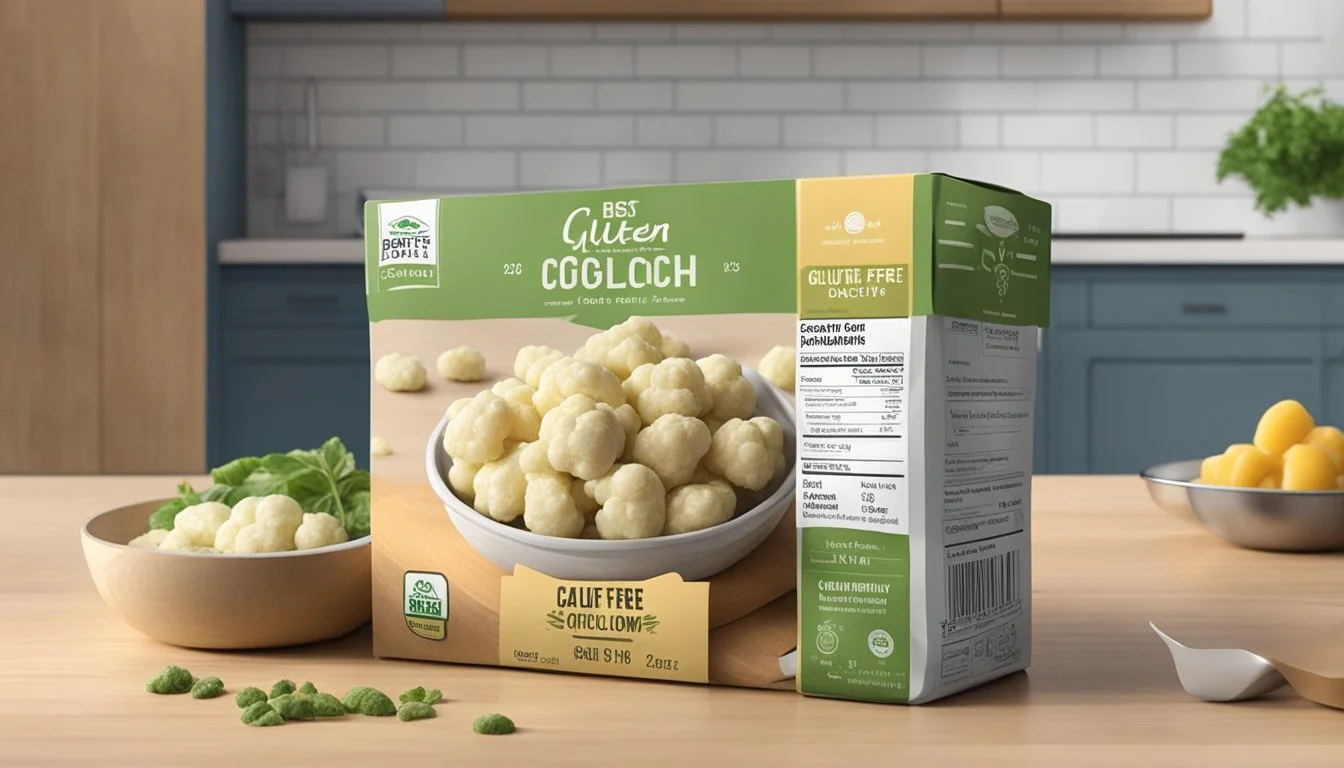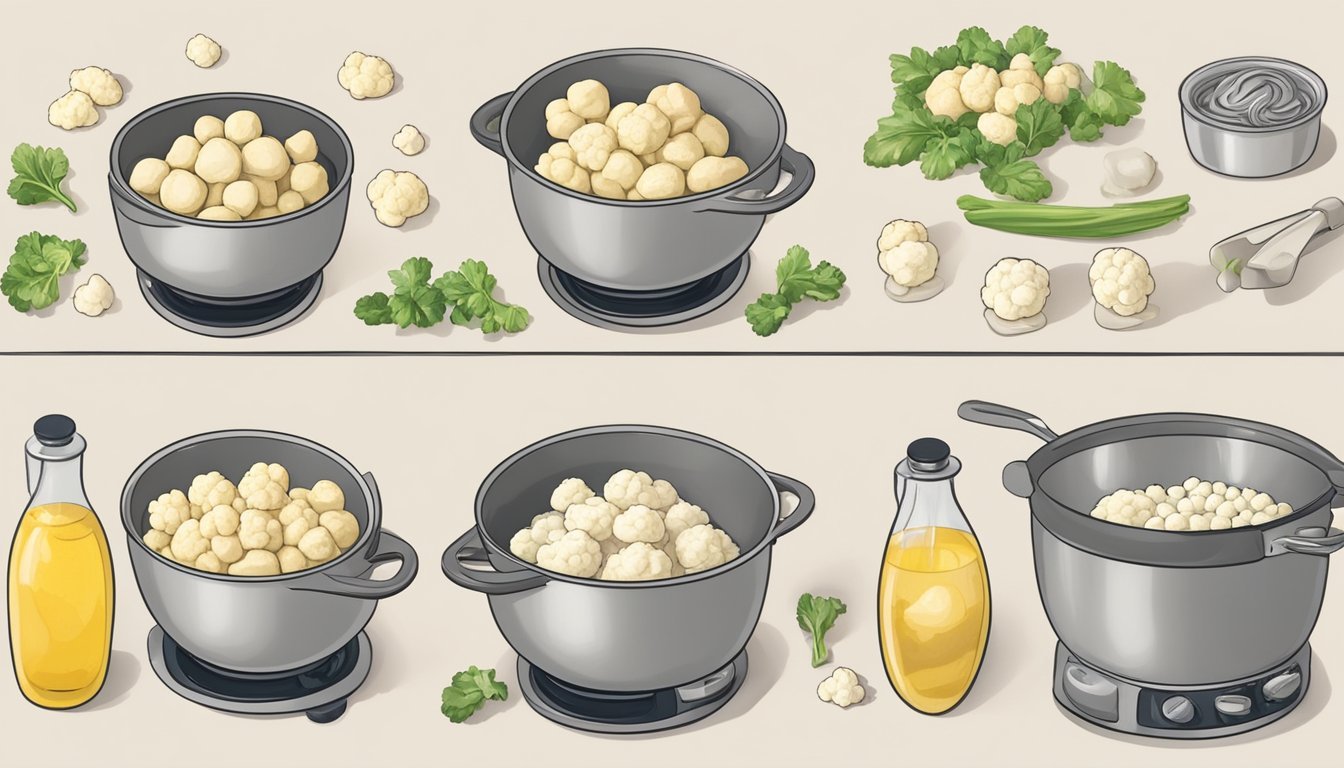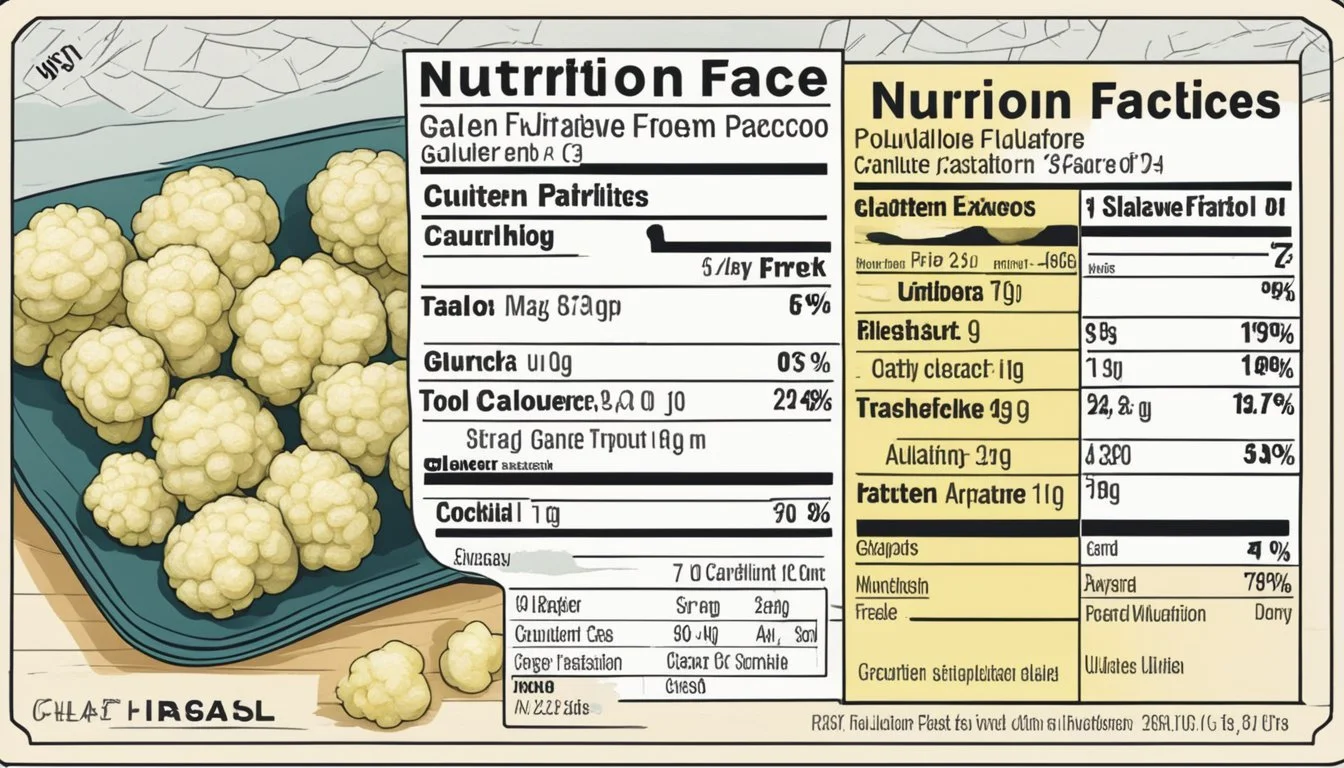How Long Do Gluten-Free Cauliflower Gnocchi Last?
Storage Tips and Guidelines
Gluten-free cauliflower gnocchi have become a popular choice for those seeking a healthy and comforting main course. When stored properly in the refrigerator, gluten-free cauliflower gnocchi can last up to five days. This makes them an excellent option for meal prep or for those busy weeknight dinners.
The preservation of your gnocchi’s freshness depends heavily on the storage method. Keeping the gnocchi in an airtight container helps maintain their texture and flavor over those days. Additionally, freezing the gnocchi can extend their shelf life up to two months, offering convenience for future meals.
Using cauliflower as the base adds a nutritious twist to this classic dish, ensuring that it remains a viable and healthy option. Pairing the gnocchi with a variety of sauces or incorporating them into different recipes can keep your meals exciting while enjoying the benefits of a gluten-free diet.
Understanding Cauliflower Gnocchi
Cauliflower gnocchi offers a nutritious and gluten-free alternative to traditional potato gnocchi. Key areas to consider include the ingredients used, potential health benefits, and how it compares to its traditional counterpart.
Ingredients and Substitutes
Cauliflower gnocchi primarily uses cauliflower as a base. Other common ingredients include gluten-free flour, salt, and olive oil. Substitutes can be tailored to dietary preferences. For binding, a vegan egg substitute can replace traditional eggs.
Varieties of flour, such as almond or coconut flour, can be used instead of all-purpose gluten-free flour. This flexibility makes cauliflower gnocchi a versatile dish suitable for gluten-free, vegan, and other special dietary needs.
Health Benefits
Cauliflower gnocchi is notably lower in carbohydrates compared to traditional gnocchi made from potatoes. Cauliflower, a cruciferous vegetable, provides fiber, vitamins C and K, and various antioxidants. These nutrients support digestion, immune health, and overall wellness.
Because it is gluten-free and often vegan, it caters to individuals with gluten intolerance or those following a plant-based diet. The reduced carbohydrate content may also support weight management and help maintain stable blood sugar levels.
Comparison with Traditional Gnocchi
Compared to traditional potato gnocchi, cauliflower gnocchi has a different texture and taste. Traditional gnocchi is typically softer and has a mild potato flavor, while cauliflower gnocchi can be slightly firmer and carries a subtle cauliflower taste.
In nutritional terms, cauliflower gnocchi is generally lower in calories and higher in fiber than its potato-based counterpart. This makes it a healthier option for those looking to reduce their carbohydrate intake or increase their vegetable consumption.
Overall, cauliflower gnocchi stands out as a nutritious and versatile dish that appeals to various dietary preferences without sacrificing flavor or satisfaction.
Making Cauliflower Gnocchi
Creating homemade cauliflower gnocchi is a fulfilling culinary project that involves preparation, forming, and cooking. These steps ensure that the gnocchi achieves the desired fluffy yet crispy texture.
Preparing the Cauliflower
Start by cutting a head of cauliflower into florets. Steam the florets, either in the microwave for 3-4 minutes or on the stovetop in a steamer basket for 6-8 minutes. The cauliflower should be tender when pierced with a fork.
Once steamed, allow the cauliflower to cool slightly. Then, transfer it to a clean towel and squeeze out as much water as possible. This step is crucial to ensure the right texture. After removing excess moisture, pulse the cauliflower in a food processor until it forms fine crumbles.
Forming and Cooking the Gnocchi
Mix the processed cauliflower with gluten-free flour, salt, and pepper. Use a ratio of about 1 cup of flour to 2 cups of cauliflower. Add an egg to help bind the mixture. If you prefer a vegan option, use a flax egg instead.
Knead the mixture until it forms a dough. Roll the dough into thin logs and cut into bite-sized pieces. These pieces can then be boiled in salted water until they float, typically about 3-4 minutes. Alternatively, for a crispy texture, bake them at 400 degrees F on a lined baking sheet for 15-20 minutes.
Cooking Tips and Techniques
When boiling the gnocchi, ensure the water is at a rolling boil before adding the pieces. Use a slotted spoon to remove them once they float. For added flavor, finish the boiled gnocchi in a hot skillet with olive oil, cooking until golden brown and crispy.
If baking, line the baking sheet with parchment paper or foil and lightly spray with olive oil. Arrange the gnocchi in a single layer for even cooking. Baking can give the gnocchi a delightful crispy texture while preserving the fluffy interior.
Experiment with adding herbs like rosemary or thyme to the dough for extra flavor. Additionally, serving with a light sauce or simple dressing enhances their delicate taste and makes for a satisfying dish.
Serving and Pairings
When serving gluten-free cauliflower gnocchi, choosing the right accompaniments enhances its flavor and texture, making for a memorable meal. Pairing it with complementary sauces and garnishes can elevate the dish significantly.
Sauce Selection
Selecting the appropriate sauce can transform cauliflower gnocchi. Pesto, with its rich olive oil, basil, and parmesan cheese, offers a fragrant, fresh option. Another popular choice is marinara sauce, providing a vibrant and tangy contrast to the gnocchi's subtle flavor.
For a more indulgent touch, consider a buttery sage sauce. Melted butter infused with fresh sage leaves creates a luxurious coating for the gnocchi. Alfredo sauce, creamy and cheesy, pairs well too, adding decadence to every bite.
Experimenting with these sauces helps find the perfect match for personal preferences.
Additions and Garnishes
Enhancing the dish with thoughtful additions and garnishes can add layers of flavor and texture. Roasted vegetables, such as bell peppers, zucchini, or cherry tomatoes, complement the gnocchi with their sweetness and a bit of char.
Sprinkle some grated parmesan cheese on top to add a savory, umami element. Fresh herbs like parsley or basil not only add a pop of color but also a fresh, aromatic note.
For a bit of crunch, consider toasted nuts like pine nuts or walnuts. These elements create a balanced and visually appealing dish, perfect for any meal.
Storing Homemade Cauliflower Gnocchi
Homemade cauliflower gnocchi can be stored through refrigeration for short-term use or frozen for longer preservation. Proper storage techniques help maintain the texture and flavor of the gnocchi, ensuring it remains a tasty addition to meal prep.
Refrigeration
Homemade cauliflower gnocchi can be kept in the refrigerator for up to 3 days. Place the cooled gnocchi in an airtight container, ensuring no extra air can get in. This helps prevent moisture loss and keeps the gnocchi from drying out.
Before closing the container, layer the gnocchi with parchment paper. This prevents them from sticking together, making them easier to cook later.
For best results, avoid storing cooked gnocchi with any sauces, as this can alter the texture over time. Instead, store the sauces separately and combine them when ready to serve.
Freezing and Thawing
For longer storage, freezing is an effective method. Frozen cauliflower gnocchi can last up to 2 months. To freeze, lay the uncooked gnocchi on a baking sheet lined with parchment paper. Freeze them individually before transferring them to a freezer-safe bag or container.
Label the container with the date to keep track of storage time. When ready to cook, thaw the gnocchi in the refrigerator overnight or cook them directly from frozen.
When cooking from frozen, consider sautéing them in olive oil to achieve a crisp texture, which enhances the meal prep experience.
Tips for Perfect Cauliflower Gnocchi
Use a steamer basket to cook cauliflower until tender, which helps maintain the right texture.
After steaming, place the cauliflower in a cheesecloth and strain out any excess water.
Mixing the cauliflower with almond flour, tapioca flour, or cassava flour offers different textures. A pinch of salt enhances flavor.
Using a fork, blend the ingredients until a dough forms. Roll into small pieces on a surface dusted with your choice of flour.
Place the gnocchi on parchment paper to prevent sticking.
For best results, cooking methods include:
Air Fry: Produces a crispy exterior.
Pan Fry: Adds a golden-brown finish.
Boiling: Yields a softer texture.
For added flavor, consider sprinkling with parmesan and sea salt after cooking.
A well-balanced amount of starch in the dough helps achieve the desired consistency.
Nutritional Profile
Gluten-free cauliflower gnocchi is a popular alternative to traditional potato gnocchi, particularly for those adhering to a gluten-free or paleo diet.
A typical serving of cauliflower gnocchi (1 cup) contains approximately 130 calories. The macronutrient breakdown for this serving is generally about 74% carbs, 20% fat, and 6% protein.
Here’s a quick overview of the nutritional values:
Nutrient Amount per 1 cup Calories 130 Carbohydrates 24g Fat 3g Protein 2g
The primary ingredients include cauliflower, gluten-free flour, and salt. Cauliflower provides a substantial amount of vitamins and minerals, particularly Vitamin C and Vitamin K. Cauliflower is also rich in fiber and antioxidants, beneficial for overall health.
This version of gnocchi avoids common allergens like gluten, dairy, and nuts, making it suitable for various dietary restrictions. The absence of gluten also makes it easier to digest for those with gluten sensitivities or celiac disease.
The fat content in gluten-free cauliflower gnocchi is relatively low, largely coming from ingredients like olive oil used during preparation. Carbohydrates are the dominant macronutrient, providing energy.
For those on a paleo diet, this gnocchi can be a favorable option if made with approved flours and no additional processed ingredients. It's a nutritious way to incorporate more vegetables into meals while adhering to dietary limitations.








